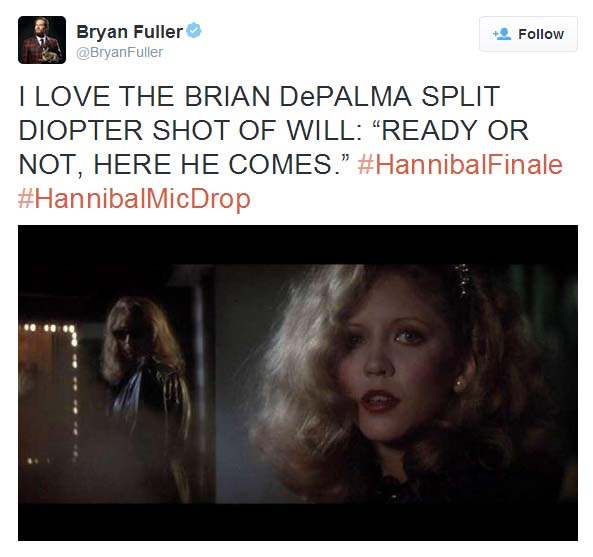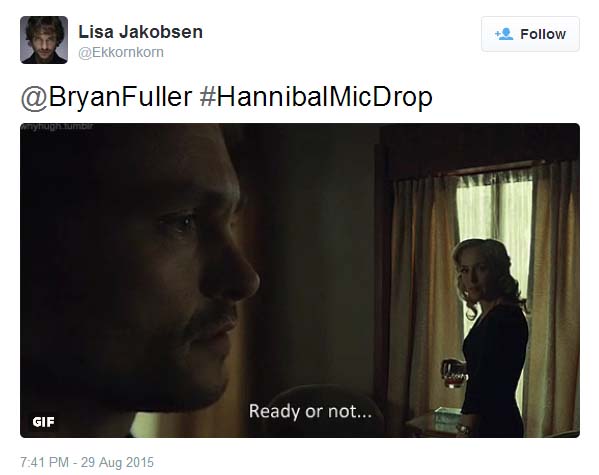AND BITS FROM TODAY'S PRESS CONFERENCE IN VENICE
Variety's Dave McNary reported early this morning that A24 had acquired distribution rights to Noah Baumbach and Jake Paltrow's De Palma, with an eye toward a release in 2016. As Deadline's Patrick Hipes notes, A24 successfully released the Amy Winehouse documentary Amy earlier this year, as well as Alex Garland's Ex Machina. Both films had decent theatrical runs. A24 will also distribute Lenny Abrahamson's Room this fall, and after that film's world premiere this past Saturday at the Telluride Film Festival, Deadline's Pete Hammond wrote, "Right now, this minute, A24 should get its Oscar campaign rolling because there are multiple possibilities for nominations."
Regarding De Palma, A24 said in a statement, "Noah and Jake have not only created a funny, nuanced and deeply insightful portrait of one of the world’s most masterful and uncompromising filmmakers, but they have made a film which explores the very essence of filmmaking, and presents a unique and enormously entertaining perspective on both the art and the business of movies."
'DE PALMA' ON-CAMERA INTERVIEW WAS CONDUCTED DURING ONE WEEK IN 2010
From the press conference in Venice and other interviews, it emerges that for their documentary, Paltrow and Baumbach filmed De Palma for one week in 2010, collecting about 30 hours worth of interview footage. De Palma, sitting in Paltrow's living room and talking about his career, wore the same shirt every day for continuity's sake. If you've seen Baumbach's recent film While We're Young, in which Ben Stiller plays a documentary filmmaker with his own excruciating continuity challenges, you might let out a little chuckle at details such as that.
"I'M A FINAL CUT DIRECTOR AND THAT'S VERY DIFFICULT TO OBTAIN IN THIS DAY & AGE"
Variety's Nick Vivarelli posted an interview today with De Palma, Baumbach, and Paltrow. "It really comes out of our friendship," Paltrow says in describing how the documentary came about. "Noah and I have known and admired Brian De Palma as a director since we were very very young. Making this movie comes out of us spending so much time with him, and talking to him about making films, and watching films. I can’t tell you how many films I’ve been introduced to by Brian, and Noah, and our group."
To which De Palma says, "And vice-versa."
More from this interview:
As directors there aren’t that many apparent affinities in your movies except that, in different ways, you all make personal pictures. Was De Palma a big influence?According to Michael Roddy's report on the press conference for Reuters, De Palma's advice to young filmmakers is that they must never give up, but that luck and a sense of humor were also needed in order to succeed. "There's no point in teaching film students unless you have this great ability to keep going no matter what they tell you," De Palma told reporters. "You must persist and you must also be lucky. You have to have talent, persistence and luck to survive in this business."
Noah Baumbach: Yes. I think most of the movies I’ve made have some connection to my childhood, making something that purely comes out of your imagination. Brian’s movies had a major effect on me even before I’d seen them because as a child I would hear about them. I would hear my parents talk about them, I would see the ads in the subways. Even just the Dressed To Kill poster had an effect on me, independently from the movie, which I couldn’t see at the time until I was a little older. When I saw The Untouchables, it was the best thing that could ever happen to me. Now I have a friendship that’s almost twenty years old with Brian, a history, a personal relationship, and now this. The movie brings it all together. A silent narrative of the movie is precisely the personal relationship.The film grew out of spending time with Brian for over ten years. Over how much time was it actually shot?
Jake Paltrow: five years ago we filmed for one week, and had Brian wear the same clothes every day to keep a continuity.And then of course you had to weave in the materials, which you did with such directorial flourish.
Jake Paltrow: we wanted to maintain the rhythm of conversation, and let Brian’s storytelling direct us, in a way. The clips were brought in to illustrate things that Brian was talking about. It was often, like, ‘what clip from which movie would go well here?’Brian, I don’t think you’ve talked that much about yourself before. How come?
Brian De Palma: because I’m basically a recluse. I only really talk about movies when I’m on a publicity tour. I had two French journalists follow me around for about seven or eight years, very bright people [Laurent Vachaud and Samuel Blumenfeld]. I talked to them and they produced a book that’s quite good. But it’s all in French and I’ve never read it.Noah Baumbach: in terms of us, the friendship was already in place. So it was in some ways a document of it; in other words an extension of it. From when we met Brian the first time, we were peppering him with these kinds of questions anyway. It was really for us like: ‘let’s document this; let’s have it.’ Brian is a singular, unique, amazing filmmmaker; but it’s also kind of universally about filmmaking, only the way that someone as great and as personal as Brian can tell it.
It seems as though with these guys (Jake and Noah) you’ve recreated some of the same spirit there was among the New Hollywood directors in that era.
De Palma: it’s unusual to have a group of directors who are bright, talented – some even genial – who get along with each other, who are not competitive, who are not trying to cut each others’ throats for some job. I have been very fortunate to grow up with a group like that and to find a new group like this more recently. It’s a lonely profession unless you have other directors to talk to.One thing that emerged from the documentary is that since “Mission to Mars” (in 2000) you have been working in Europe. It’s difficult, I guess impossible, for you to find financing within the U.S. studio system. Why?
De Palma: well, I’m a very troublesome director, because I’m a final cut director and that’s very difficult to obtain in this day and age. I discovered, when I was making Mission to Mars that they were spending a tremendous amount of money, and we didn’t even have enough money to finish the picture the way I would have liked to. I’m saying to myself: ‘we are spending a hundred million dollars on a movie. Yikes! This is crazy! And these days it’s more like three hundred million dollars. You don’t get much satisfaction worrying about what the grosses are the Saturday morning the movie opens; whether you are alive or dead.There is so much pressure on you that has very little to do with the quality of your work. I’ve made big hits, I’ve made big disasters, obviously it feels better to make a hit. And in order to make movies at that level you have to have that kind of success. It’s a terrible road to be on!
Discussing the documentary, De Palma said, "The genius of it was how they were able to take out their questions and then illustrate the film with all these pieces of other film, and to me its quite amazing."
THREE "FASCINATING EXPERIMENTS" - STAIRWAY SHOOTOUT, STEADY-CAM IN 'BONFIRE', MUSEUM PICK-UP IN 'DTK'
When asked to name his favorites of his own films, De Palma said that would be like a parent being asked to name a favorite child. Even so, he named three sequences in his films, saying, "All are fascinating experiments that turned out quite well"-- the stairway shootout in The Untouchables, the steady-cam shot at the beginning of Bonfire Of The Vanities, and the museum sequence in Dressed To Kill.
Updated: Thursday, September 10, 2015 5:12 PM CDT
Post Comment | View Comments (3) | Permalink | Share This Post




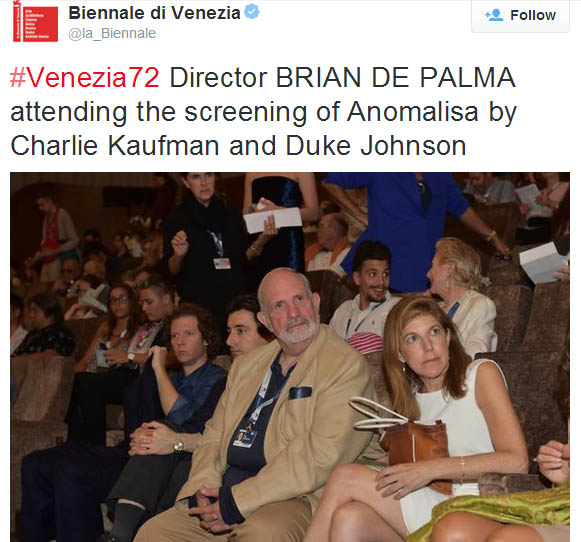
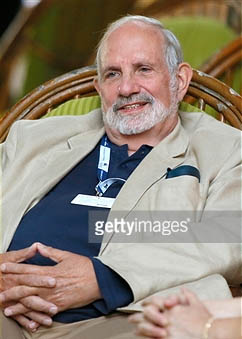


 This past July,
This past July, 
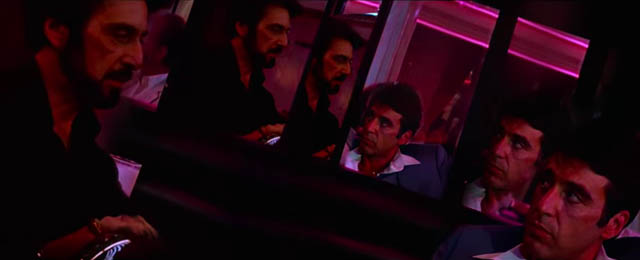
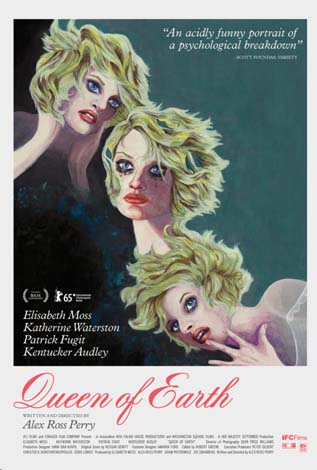 This past February, after Queen Of Earth screened at the Berlin Film Festival,
This past February, after Queen Of Earth screened at the Berlin Film Festival, 
